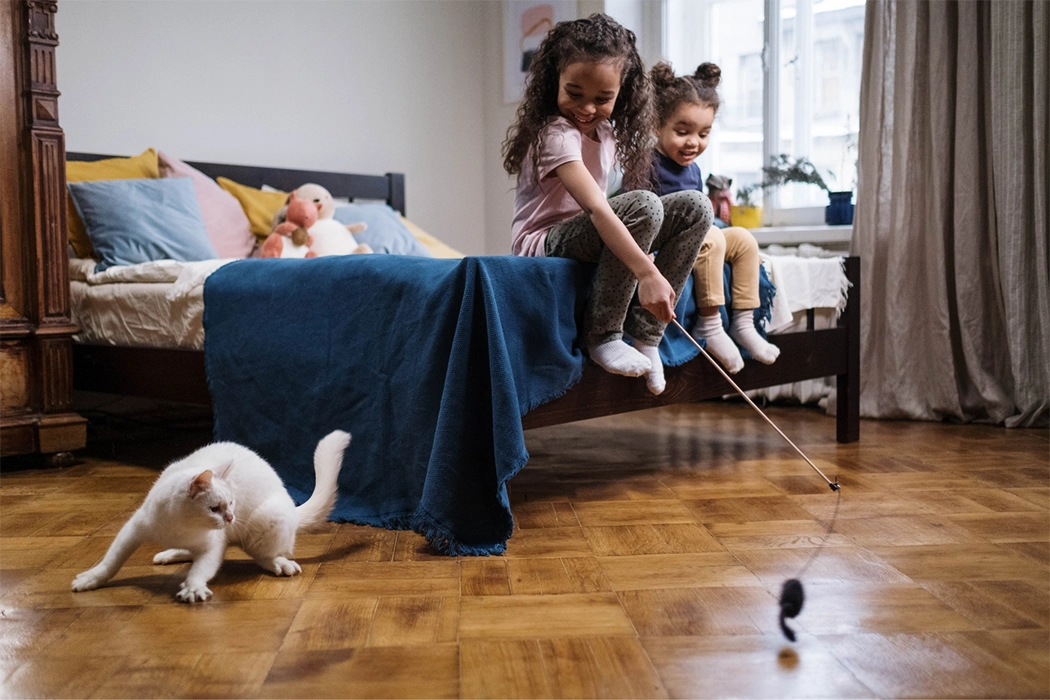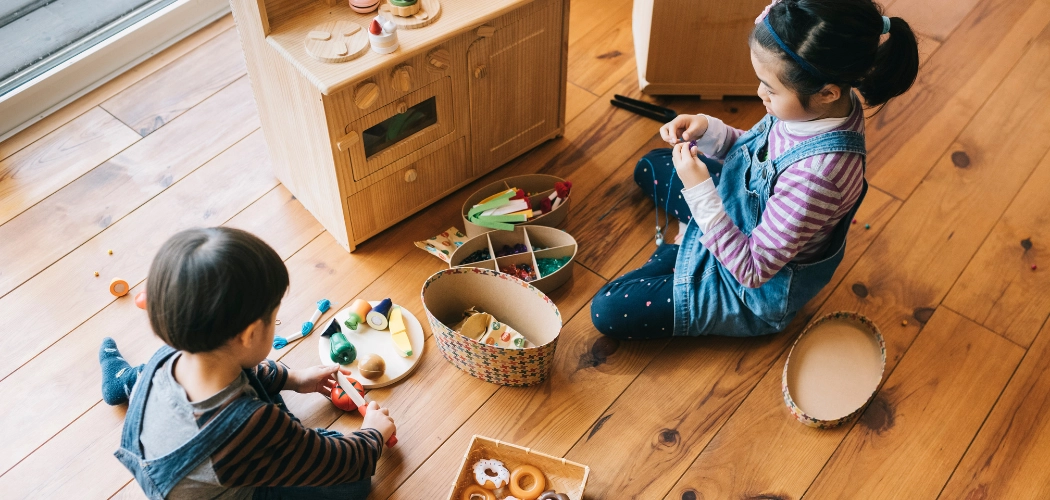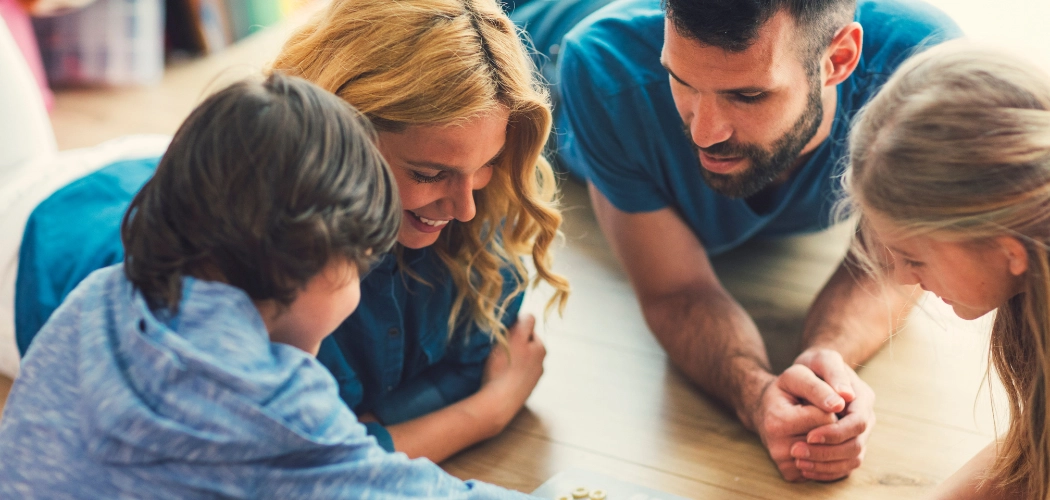Pets play an increasingly important role in many families. Pet ownership rates have risen dramatically over the past few decades, with over 85 million families in the United States owning a pet as of 2021. This amounts to 67% of all U.S. households. With so many children growing up with pets, it’s important to understand the impact these animals can have on child development.
Research has shown that pets can provide many benefits for children’s physical, cognitive, emotional and social development. However, pets can also pose some risks that parents should consider. This article will explore the key ways pets influence child development, both positively and negatively. Understanding this complex dynamic can help parents make informed decisions about bringing an animal into the family during their child’s formative years.
Companionship
Having a pet provides children with a sense of companionship and can help relieve feelings of loneliness. Pets are often viewed as playmates and friends, providing constant interaction and affection. Children frequently talk to and confide in pets as if they were trusted companions.
Playing with pets can also help children build social skills. Interacting with a pet teaches them how to take turns, share, communicate and read body language. It allows them to practice expressing empathy and caring for another living being. Pets can act as transitional attachment figures, helping children feel more comfortable around others.
Responsibility
Caring for a pet helps teach children how to be responsible from a young age. Having a pet can allow your child to learn what it means to provide food, water, exercise, grooming and general care on a daily basis. This routine helps them learn how their actions impact another living creature. It builds an understanding of cause and effect as children see how failing to feed or walk a dog has negative consequences. Neglecting these duties could make the pet sick, sad or anxious.
Children can also learn to be responsible for their pet’s safety. They may have to train and supervise pets to ensure proper behavior or provide safe spaces for pets to play and thrive. With proper guidance, having a pet makes it easier for children to grasp abstract concepts like duty, accountability and reliability. Hands-on experience creates meaningful lessons on responsibility that children will carry into adulthood.
Empathy
Bonding with pets helps children develop empathy and compassion from a young age. Caring for a pet requires kids to recognize and respond to the animal’s needs and feelings. Seeing a pet eagerly await being fed or wanting to play teaches children to understand perspectives beyond their own. Children learn to read subtle cues from body language and sounds to understand when a pet is happy, scared, hungry or needs comfort. This builds an intuitive sense of empathy as they notice how their actions affect the pet’s emotions. Studies have shown that kids who care for pets score higher on empathy measures and are more cooperative and share more with others compared to kids without pets. The responsibilities of pet care give kids practical experience in compassion. For example, gently stroking an anxious cat to soothe it, or volunteering to walk the family dog when others are busy allows children to internalize empathy as a natural response to others’ feelings and needs. Having a pet provides kids with a safe space to develop stronger empathy and nurturing skills that extend to human relationships.
Emotional Support
Pets provide a source of comfort and can help reduce anxiety and stress in children’s lives. The companionship of a pet gives children someone to confide in, express emotions to, and feel unconditional love from.
Having a pet can be particularly beneficial for children dealing with emotional issues like grief, loneliness, or low self-esteem. The affection and acceptance from a pet can boost their mood and make them feel cared for. Studies have shown that just petting or stroking an animal can increase levels of oxytocin and decrease cortisol, leading to calmer and happier kids.
Pets can also ease separation anxiety kids feel when parents are away. Knowing their pet is there for comfort and security can help children feel less alone. Therapy dogs are sometimes brought into hospitals, schools and other settings specifically to provide emotional support to children in challenging situations.
The emotional bond and stability pets provide can be an important source of comfort throughout childhood and even into adulthood. Their constant companionship and responsiveness to human emotions makes pets an impactful source of unconditional love and acceptance for developing kids.
Physical Activity
Playing with pets, especially dogs, encourages children to engage in physical activity and exercise. Taking dogs for walks or playing fetch in the backyard promotes more active lifestyles for both the pet and the child. Studies have found that children with dogs spend more time engaged in light to moderate physical activity compared to children without dogs.
Dog walking provides an easy and rewarding form of exercise that gets kids outside and moving each day. The daily responsibility of walking a dog helps create an exercise routine and habit. With a furry companion by their side, children may be more motivated to take a walk around the block, play catch, or go for a hike. The American Heart Association recommends children get at least 60 minutes of moderate intensity exercise per day, and owning a pet can help kids meet this goal in an enjoyable way.
Related Post: Play
Cognitive Benefits
Interacting with pets has been shown to provide cognitive benefits for children. Studies have found that exposure to pets may actually boost children’s intelligence and thinking skills in various ways.
One reason for this is that pets stimulate children’s minds through play and interaction. When kids play with pets, whether it’s playing fetch with the family dog or watching fish swim in an aquarium, they are actively engaging their brains. This kind of mental stimulation can enhance children’s cognitive abilities.
Research has also shown a link between pet ownership and higher academic performance. In one study, students ages anywhere from 11-16 who owned dogs scored significantly higher on school exams in math, reading and science compared to students without pets. The researchers theorized that caring for a pet may teach children responsibility, motivate them to complete homework and study for tests, and even keep them more engaged at school.
While further research is still needed, the evidence so far indicates that growing up with pets provides important intellectual stimulation that aids cognitive development in children. Through play and caretaking, pets give kids’ minds a workout that pays off academically and cognitively.
Health Benefits
Having a pet can provide various health benefits for children. Studies have shown that early exposure to pets may help prevent or reduce allergies and asthma in kids. The hygiene hypothesis suggests that being around pets and other animals at an early age teaches the immune system not to overreact to benign substances. As a result, children who grow up with pets tend to have stronger immune systems and reduced rates of allergies and asthma.
Research also indicates that interacting with pets can help lower blood pressure and heart rate in children. Petting and playing with animals releases oxytocin, a hormone that promotes bonding and relaxation. This helps children maintain lower stress levels, which is beneficial for long-term cardiovascular health. One study found that children who read aloud to dogs for just 20 minutes experienced significantly reduced blood pressure. Regularly interacting with pets may provide lasting positive impacts on children’s stress levels and heart health.
Overall, having pets can enrich children’s physical health in various ways. From stronger immune systems to better heart health, pets offer many potential wellness benefits during childhood development.
Related Post: Our Family Home
Potential Risks
While pets can provide many benefits for children, they also come with some potential risks that parents should be aware of.
Bites, Scratches, Infections, and Parasites
Pets like dogs and cats have sharp teeth and claws that can accidentally hurt a child if the pet gets scared or overexcited. These bites and scratches can become infected or transmit diseases. Pets can also carry parasites like fleas, ticks or worms that could be passed to family members. Regular grooming, flea/tick prevention, and deworming medication can reduce these risks.
Allergies
Some children may be allergic to pet dander, saliva or urine. Reactions can range from mild sniffling and itchy eyes to severe wheezing and difficulty breathing. Parents should watch for allergy symptoms when introducing a new pet. Medication and keeping pets out of bedrooms can help, but rehoming the pet may be necessary in severe cases.
Pet-Related Injuries
Pets can accidentally knock down and injure small children. Tripping over a pet is also a hazard. Dog walks pose risks like traffic accidents or the child dropping the leash. Supervision and training pets not to jump or nip can reduce chances of injury. Teaching kids proper pet handling is also important to avoid injuries.
The role pets play in a child’s development is significant and multidimensional. As we’ve explored, pets provide companionship, teach responsibility, build empathy, and offer emotional support to children as they grow. Caring for a pet also encourages physical activity and can impart cognitive benefits. There are even indications that exposure to pets early in life can support better health outcomes.
While bringing an animal into the family does require careful consideration of potential risks, the preponderance of evidence indicates that pets are beneficial for child development. Their presence stimulates social-emotional growth, shapes character, and deepens bonds within the family unit.
When responsibly acquired and properly cared for, pets can truly become members of the family. They have much to offer children in terms of love, friendship and learning. Pets should be welcomed as partners in the wondrous journey of raising the next generation.




